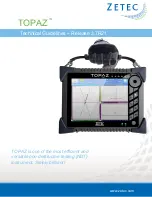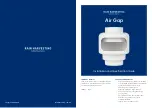
13
WASTE DISPOSAL
Materials: separate plastic from metal parts. Dispose of by authorized companies.
DEFECT
CAUSE
SUGGESTION
1
The dampener
doesn’t run and/or
it doesn’t start
No air in the circuit
Check circuit, valves and connections
Insufficient air pressure
Adjust pressure on the relevant reducer
Insufficient air flow rate
Check that piping and accessories have suitable passage
Damaged control valve
Check and replace
Broken diaphragm
Check if any air comes out from the product delivery pipe.
If so, replace diaphragm.
2
The dampener is
not performing at
its best
There is an air leak in the valve.
Replace the air valve
The product pipe is clogged and ob-
structed
Disassemble the product pipe and clean it
The product being pumped is too
viscous
The air is dirty, full of condensate or oil Check the air feed line.
Air volume or pressure is insufficient
Ensure that all the air control equipment has sufficient flow
TROUBLESHOOTING AND POSSIBLE CAUSES
trical and chemical features of the plant being fed by the pump and of the pump itself):
verification of environmental conditions
•
verification of the condition of the liquid being pumped
•
inspections of the control/stop devices of the pump
•
inspections of the rotating parts of the dampener
•
trouble shooting
•
PERSONNEL RESPONSIBLE FOR REPAIRS
Interventions allowed to general operators under the supervision of qualified personnel:
stopping of the dampener
•
closing of the valve
•
emptying of pump body
•
disconnection of piping from fittings
•
removal of anchoring bolts
•
washing with water or suitable solvent as needed
•
Interventions by qualified personnel (technical capacities required: general knowledge of machining operations, awa
-
reness of possible damage to parts due to abrasion or shocks during handling, know-how of required bolt and screw
tightening required on different materials such as plastics and metals, use of precision measuring instruments):
opening and closing of the dampener body
removal and replacement of rotating parts


































